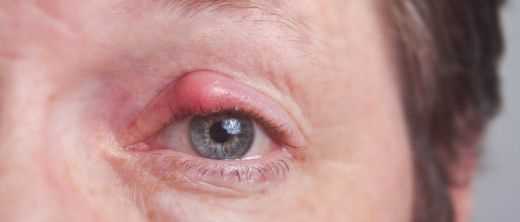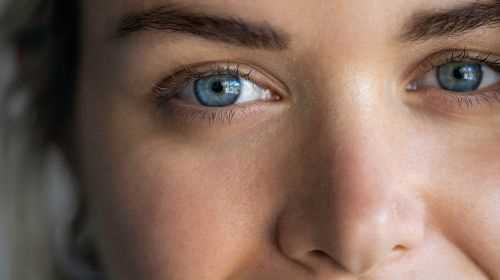A hailstone is a lump about the size of a pea under the skin of the eyelid. In most cases, the inflammation is harmless and will go away on its own. But when it is better to treat and remove it.
Many have already experienced it themselves: A small lump forms on the lower or upper eyelid and swells to a considerable size. Annoying, but not painful – nevertheless, some people affected by hailstones quickly decide to have an operation to get rid of the unsightly swelling. With patience and the right home remedies, hailstones can be healed without surgical intervention.
Article content at a glance:
The cause of the hailstones are blocked sebum glands
Regardless of age and gender, a chalazion can develop on the eye, as the hailstone is technically called. Due to the blockage of a sebum gland on the edge of the eyelid, the sebum can no longer escape. For several weeks, a relatively firm nodule accumulates under the skin of the eyelid, and the surrounding tissue becomes inflamed. In some cases the entire lid even turns bluish-purple in color.
Symptoms of the hailstone
The hailstone is usually not particularly painful and can be moved. It can happen that the inside of the eyelid is reddened. Otherwise, there are hardly any signs of inflammation such as fever, heat, redness and severe swelling due to the lump. Unlike the stye, the hailstone is not a local bacterial infection.
Do you have to go to the doctor with hailstone?
There are different forms of hailstone. If the inflamed area puts pressure on the eyeball due to its size or location, it can be detrimental to eyesight.
Especially with children, it is imperative to consult a doctor and possibly surgically remove the chalazion in order to avoid permanent visual damage. If such lumps occur more frequently or at the same time, the doctor should rule out a tumor.
Chalazion therapy: home remedies for hailstones
Your doctor will usually prescribe anti-inflammatory eye drops or ointments. Medicines containing antibiotics are usually not necessary as there are no bacteria involved.
In addition, those affected can support the healing process with simple applications. Since a hailstone is formed due to blocked gland ducts, the knot can slowly be broken down by freeing them. Irradiation with a red light lamp has proven to be a simple but effective treatment for this. Due to the dry heat, the accumulation of secretion loosens and the knot gradually becomes smaller. Placing warm, moist compresses on the affected eyelid is just as effective. Here, too, the heat opens the pores of the lid and accelerates the breakdown of the encapsulated sebum.
Treating With Red Light Or Removing Through Surgery?
However, treatment with heat only speeds up the healing of a hailstone. It can take several weeks for the inflammation to finally subside – that is, those affected have to be very patient.
Anyone who does not have this patience, is severely restricted by the chalazion or even feels pressure on the eye, can have the inflamed tissue removed immediately with a short surgical procedure. Local anesthesia is sufficient to remove the lump with a small incision.
With homeopathy against the hailstone
The use of homeopathic medicines can complement conventional treatment. The choice of remedy, dosage and potency depend on the patient and the individual complaints and should be discussed with a homeopath, doctor or pharmacist.
The following homeopathic active ingredients can be used:
Pyrogenium C7 or C9: helps dissolve the sebum and counteracts the formation of pus
Myristica C9: promotes the outbreak of pus and thus ensures faster healing
Hepar sulfuris 15C (as a single dose): prevents further swelling and pus formation
Belladonna C5, three globules every hour: generally help against swelling and pain
Silicea C4: promotes wound healing in general
.



